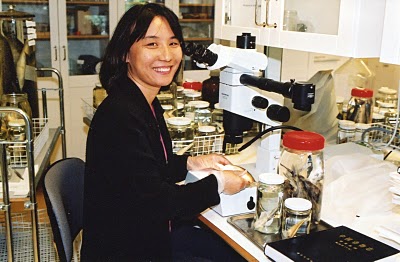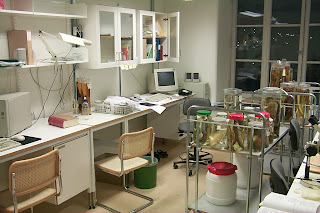Fang was born in Beijing in 1962. She had an MSc in fish biology and left a position at the Institute of Zoology in Beijing when she came to Sweden in 1993 to do her PhD at Stockholm University. With time she turned Swedish, and completed her PhD with a dissertation on danios which she defended in 2001 with Richard P. Vari as opponent.
Fang remained all the time with the Swedish Museum of Natural History, upholding various positions, eventually as a curator in the Swedish FishBase team where, among other things, she was the key person behind the triannual Artedi Symposia. She was probably the greatest fan of Artedi ever. For over two years she also coordinated ECOCARP, a major collaborative project with several European and Chinese laboratories joining to search for Asian aquaculture fish candidates. Over the last years there was not much time for research. She was secretary in the European Ichthyological Society, member of the IUCN freshwater fish specialist group, and much more. Nonetheless, she was the author of 30 papers, and two are still to appear.
Fang passed away on 19 May, 2010, after a year of fight against cancer. She is buried in the St. Botvid cemetery south of Stockholm, in a peaceful setting overlooking a bay of Lake Mälaren.
Fang was an open, cheerful person that made many friends within and outside science, and in many ways made ichthyology more fun. With her passing, Ichthyology has lost much of its charm.
Fang’s research focussed on danios. Her favorite fish was one she discovered in Myanmar in 1997, a very distinctive danio, golden with dark brown spots, which she named Danio kyathit. It soon became a much appreciated aquarium fish. Although there is a species named after her, Devario fangfangae, her name will probably be more firmly associated with Danio kyathit. Her legacy includes an additional nine species of Danio and Devario, and several other taxa.
Read more about Fang on the family’s memorial web site.
Species of danios described by Fang:
Devario maetaengensis (Fang, 1997)
Danio kyathit Fang, 1998
Devario apopyris (Fang & Kottelat, 1999)
Devario leptos (Fang & Kottelat, 1999)
Devario acrostomus (Fang & Kottelat, 1999)
Danio roseus Fang & Kottelat, 2000
Danio aesculapii Kullander & Fang, 2009
Danio quagga Kullander, Liao & Fang, 2009
Danio tinwini Kullander & Fang, 2009
Devario xyrops Fang & Kullander, 2009

